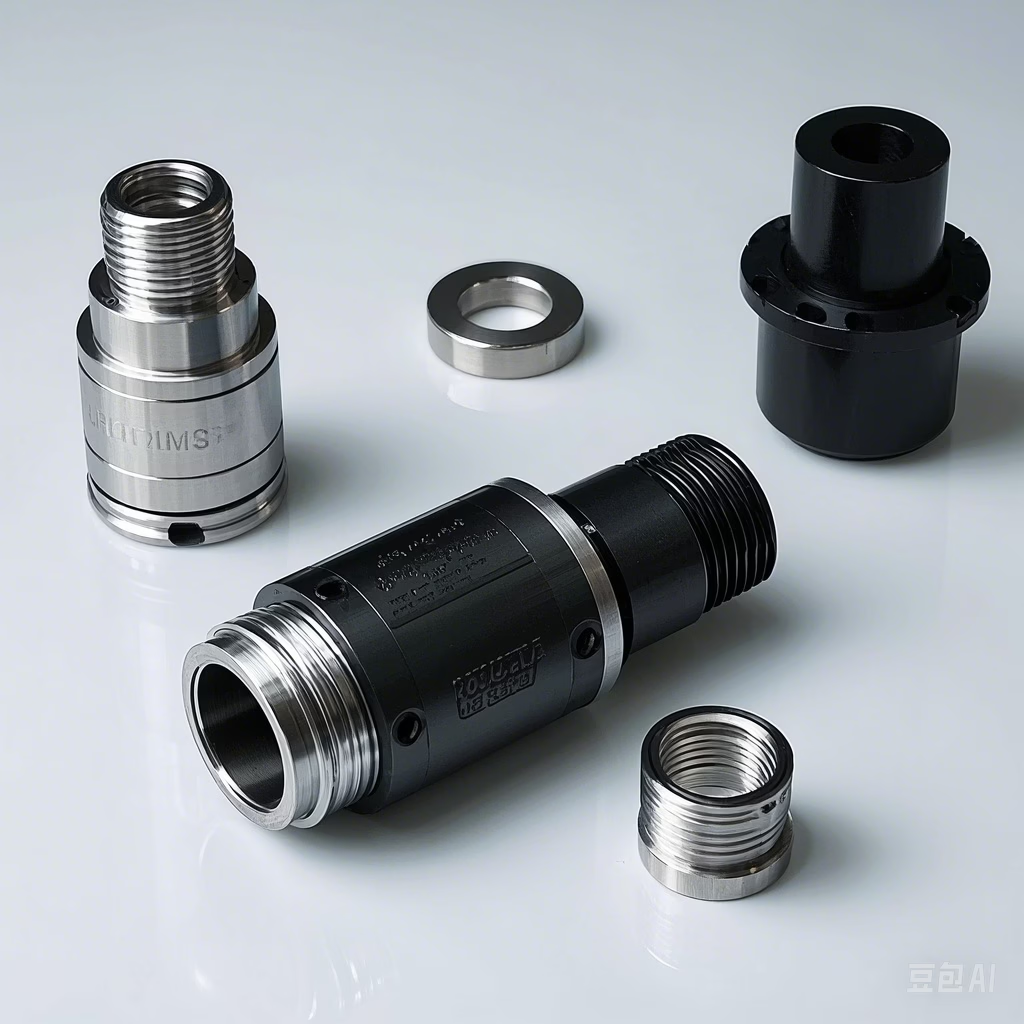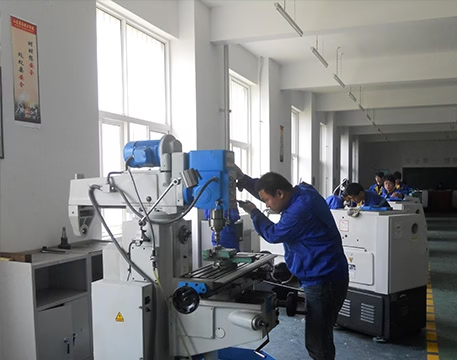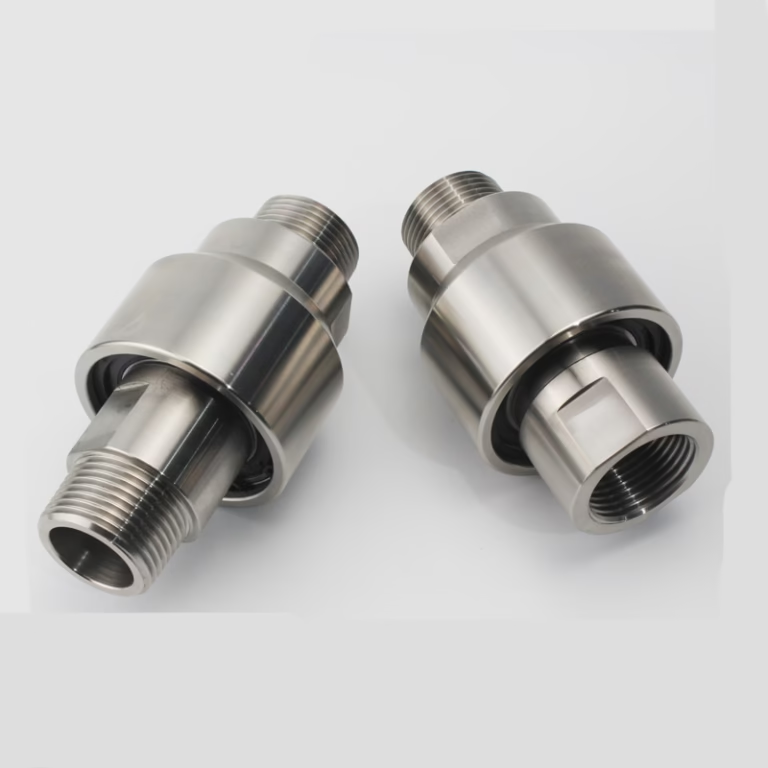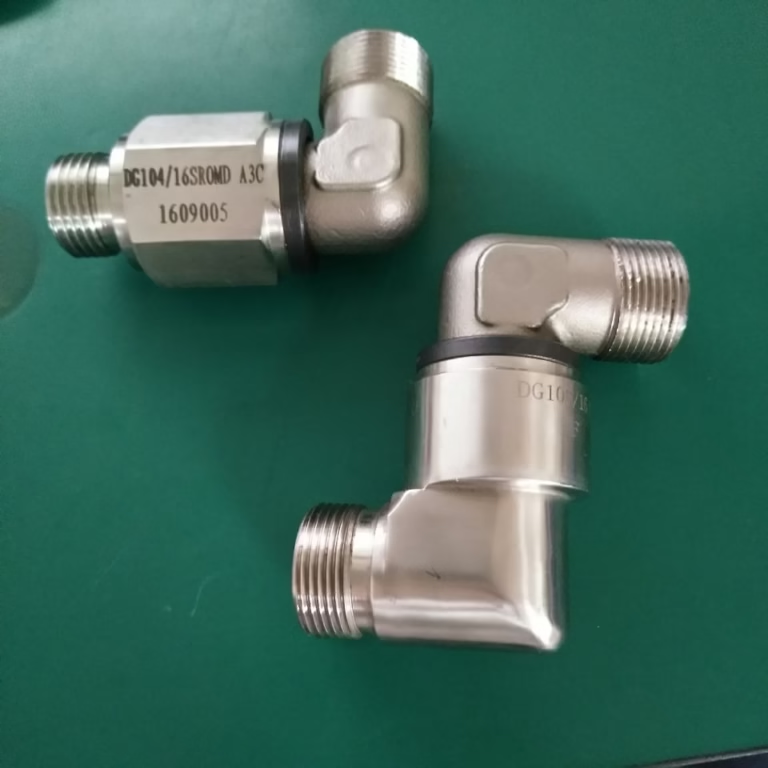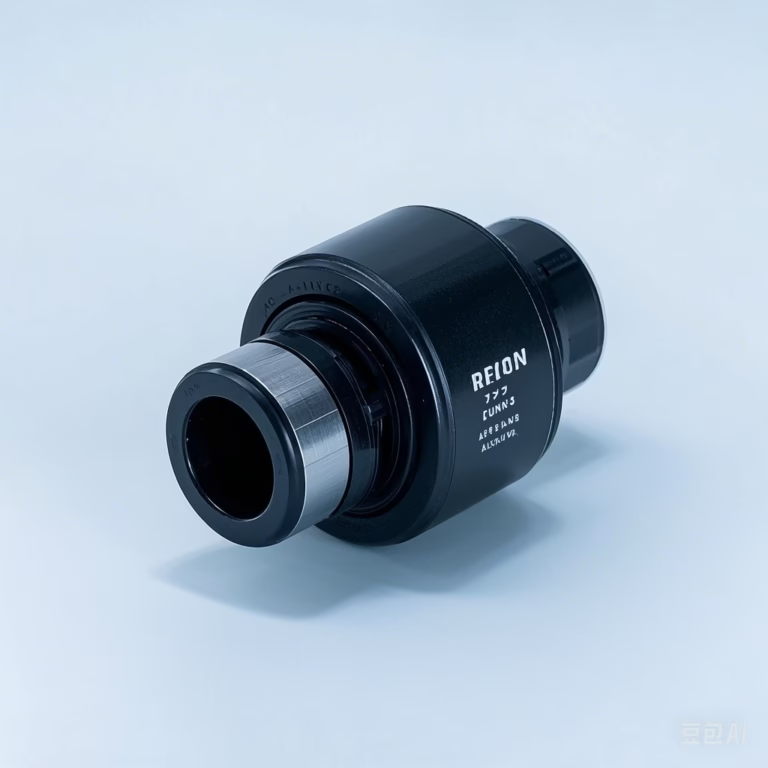Understanding the Basic Components of Rotary Joint
Understanding the Basic Components of Rotary Joint: A Comprehensive Guide
Introduction
In the realm of mechanical engineering, rotary joints play a crucial role in facilitating the transfer of various media, such as fluids, gases, and electrical signals, between rotating and stationary components. These devices are essential in a wide range of applications, from industrial machinery to aerospace technology. To fully appreciate the functionality and design of rotary joints, it is imperative to understand their basic components. This article delves into the fundamental elements that constitute a rotary joint, exploring their roles, materials, and design considerations. By the end of this guide, you will have a thorough understanding of how these components work together to enable efficient and reliable operation in diverse environments.
1. Definition and Types of Rotary Joints
A rotary joint, also known as a rotary union or swivel joint, is a mechanical device that allows the transfer of various substances such as steam, water, air, oil, or hydraulic fluid from a stationary source to a rotating component of a machine without leakage.
It acts as a connection point that bridges the gap between the fixed and moving parts, ensuring a continuous and secure flow of the medium being transferred.
Rotary joints come in different shapes, sizes, and configurations, depending on their intended application. Some are for simple, single-port applications where the material passes directly through the joint, while others are more complex, featuring multiple ports to handle the transfer of different media simultaneously.
The design of a rotary joint is carefully engineered to meet the specific requirements of the system it integrates into, taking into account factors such as pressure, temperature, rotational speed, and the type of media being transferred.
Rotary joints employ in various applications, including:
Industrial Machinery: Such as rotating tables, indexers, and robotic arms.
Aerospace: In aircraft engines and landing gear.
Automotive: In steering systems and turbochargers.
Medical Equipment: In surgical instruments and imaging devices.
There are several types of rotary joints, each tailored to specific applications and media:
Mechanical Rotary Joints: for transferring fluids and gases. They are commonly in hydraulic systems, cooling systems, and pneumatic systems.
Electrical Rotary Joints: Also known as slip rings, these joints transfer electrical power and signals. They are essential in applications where continuous rotation is required, such as radar systems and camera platforms.
Optical Rotary Joints: Facilitate the transfer of optical signals, typically in fiber optic communication systems and laser equipment.
2. Basic Components of a Rotary Joint
A typical rotary joint consists of several key components, each playing a vital role in its operation. These components are designed to work together seamlessly, ensuring efficient transfer of media while maintaining structural integrity and durability.
2.1 Housing or Shell
The housing, or shell, is the outer protective structure of the rotary joint. It serves multiple purposes:
Containment: It houses the internal components, protecting them from external elements and debris.
Support: Provides structural support for the rotating and stationary parts.
Fluid Path: In some designs, the housing may incorporate passages for the media being transferred.
The housing is typically made from robust materials such as stainless steel, aluminum, or brass, depending on the application requirements. The material selection is crucial to ensure compatibility with the media, resistance to corrosion, and sufficient mechanical strength.
2.2 Rotor
The rotor is the rotating component of the rotary joint. It is responsible for transmitting the media from the stationary part to the rotating part. The rotor design to rotate smoothly and continuously, ensuring uninterrupted transfer of media.
Key features of the rotor include:
Bearing Surfaces: The rotor is equipped with bearing surfaces that allow it to rotate smoothly within the housing. These surfaces are often coated with lubricants or designed with special materials to reduce friction and wear.
Media Channels: The rotor contains channels or passages through which the media flows. These channels are carefully designed to minimize pressure loss and ensure efficient transfer.
2.3 Stator
The stator is the stationary component of the rotary joint. It remains fixed while the rotor rotates, providing a stable interface for the transfer of media. The stator is typically mounted to a fixed structure, such as a machine frame or a pipe.
The stator’s primary functions include:
Media Inlet/Outlet: It provides connections for the inlet and outlet of the media, ensuring that the media can flow into and out of the rotary joint.
Support for Seals: The stator often houses the sealing elements, providing a stable surface for the seals to maintain contact with the rotor.
2.4 Seals
Seals are critical components of a rotary joint, as they prevent leakage of the media between the rotating and stationary parts. Effective sealing is essential to ensure the integrity of the system and prevent contamination of the media.
There are several types of seals used in rotary joints, each with its advantages and disadvantages:
Mechanical Seals:
These seals use a combination of spring pressure and fluid pressure to maintain contact between the rotating and stationary sealing faces. They are highly effective in preventing leakage and are suitable for high-pressure applications.
Labyrinth Seals:
These seals use a series of grooves and ridges to create a tortuous path for the media, impeding its leakage. They are often in applications where minimal leakage is acceptable and where the media is not hazardous.
O-Ring Seals:
These seals are simple and cost-effective, using elastomeric O-rings to create a seal between the rotor and stator. They are suitable for low-pressure applications and where the media is not highly corrosive.
The choice of seal depends on factors such as the type of media, operating pressure, temperature, and rotational speed.
2.5 Bearings
Bearings are essential components that enable the rotor to rotate smoothly within the housing. They reduce friction and wear, ensuring efficient operation and extending the lifespan of the rotary joint.
Common types of bearings used in rotary joints include:
Ball Bearings:
These bearings use spherical balls to reduce friction between the rotor and stator. They are suitable for high-speed applications and can handle moderate radial and axial loads.
Roller Bearings:
These bearings use cylindrical rollers to provide support and reduce friction. They are capable of handling higher loads than ball bearings and are suitable for applications with heavy radial loads.
Plain Bearings:
Also known as sleeve bearings, these bearings use a sliding contact between the rotor and stator. They are suitable for applications with low speeds and moderate loads.
The selection of bearings depends on the specific requirements of the application, including load capacity, rotational speed, and operating environment.
3. Materials and Design Considerations
The choice of materials for the components of a rotary joint is crucial to ensure its performance, durability, and compatibility with the media. The materials must be able to withstand the operating conditions, including temperature, pressure, and chemical exposure.
3.1 Material Selection
Housing and Stator:
These components are often made from metals such as stainless steel, aluminum, or brass. The choice of metal depends on factors such as corrosion resistance, mechanical strength, and cost.
Rotor:
The rotor is typically made from the same material as the housing and stator to ensure compatibility and minimize wear. In some applications, the rotor coat with a special material to enhance its wear resistance or corrosion resistance.
Seals:
The material of the seals depends on the type of media and operating conditions. For example, elastomeric seals are suitable for low-pressure applications, while metallic seals may be required for high-pressure or high-temperature applications.
Bearings: The material of the bearings depends on the type of bearing and the operating conditions. For example, ball bearings and roller bearings are often made from steel, while plain bearings may be made from bronze or other materials.
3.2 Design Considerations
Operating Conditions:
The design of the rotary joint must take into account the operating conditions, including temperature, pressure, rotational speed, and media type. The components must be able to withstand these conditions without failure.
Media Compatibility: The materials used in the rotary joint must be compatible with the media being transferred. For example, if the media is corrosive, the materials must be resistant to corrosion.
Efficiency:
The design of the rotary joint must ensure efficient transfer of media, minimizing pressure loss and energy consumption.
Maintainability: The design should facilitate easy maintenance and repair, with accessible components and clear instructions for servicing.
4. Applications of Rotary Joints
Rotary joints find applications in a wide range of industries and equipment, where the transfer of media between rotating and stationary components is essential. Some common applications include:
Industrial Machinery: Rotary joints in rotating tables, indexers, and robotic arms to transfer hydraulic fluid, coolant, or compressed air.
Aerospace: In aircraft engines, rotary joints transfer fuel, oil, and hydraulic fluid between rotating and stationary parts.
Automotive: Rotary joints in steering systems, turbochargers, and cooling systems to transfer fluids and gases.
Medical Equipment: In surgical instruments and imaging devices, rotary joints transfer electrical signals and optical signals.
5. Maintenance and Troubleshooting
Proper maintenance is essential to ensure the longevity and reliability of a rotary joint. Regular inspection and servicing can prevent failures and minimize downtime.
5.1 Maintenance Tips
Regular Inspection: Inspect the rotary joint periodically for signs of wear, leakage, or damage.
Lubrication: Ensure that the bearings and seals are properly lubricated to reduce friction and wear.
Cleaning: Keep the rotary joint clean and free from debris to prevent contamination of the media.
Replacement of Worn Components: Replace worn or damaged components promptly to prevent further damage to the rotary joint.
5.2 Troubleshooting Common Issues
Leakage: worn seals, damaged housing, or improper installation cause leakage. Check the seals and housing for signs of wear or damage and replace them if necessary.
Excessive Wear: Insufficient lubrication, misalignment, or overloading cause excessive wear. Ensure that the bearings are properly lubricated, check for misalignment, and avoid overloading the rotary joint.
Noise: Worn bearings, misalignment, or loose components can cause noise. Check the bearings for signs of wear, ensure proper alignment, and tighten any loose components.
6. Future Trends in Rotary Joint Technology
As technology continues to advance, rotary joints are evolving to meet the demands of new applications and operating conditions. Some future trends in rotary joint technology include:
Miniaturization: The development of smaller, more compact rotary joints for use in miniature devices and robotics.
Improved Sealing Technology: The development of more efficient and durable seals to prevent leakage and improve the performance of rotary joints.
Smart Rotary Joints: The integration of sensors and monitoring systems into rotary joints enables real-time monitoring of their performance and condition.
Enhanced Material Technology: The development of new materials with improved properties, such as higher strength, better corrosion resistance, and improved wear resistance.
FAQ:
Q1. What is a rotary joint, and why is it important in machinery?
A1: A rotary joint, also called a rotary union, is a mechanical device that transfers fluids (e.g., water, steam, oil), gases, or electrical signals between stationary and rotating parts of equipment. It’s critical for systems requiring seamless media flow during rotation, such as printing presses, industrial rollers, or aircraft engines, to ensure no leakage and continuous operation. Without it, rotating machinery would struggle to receive essential fluids or power, leading to inefficiency or failure.
Q2. What are the main components of a rotary joint?
A2: The core components include:
Mechanical Seal: Prevents leakage by creating a barrier between moving and stationary parts (e.g., pusher-type seals, O-rings, lip seals).
Bearings: Support smooth rotation, handling radial/axial loads (e.g., roller bearings, bronze bushings).
Shaft: Transmits media to rotating parts like drums or rolls, often made of durable materials like stainless steel.
Housing: Encloses components and connects to supply/return lines, available in materials like cast iron or steel.
Q3. How do mechanical seals work, and what types are commonly used?
A3: Mechanical seals use mating surfaces (rotating and stationary) to block leaks. Common types include:
Pusher-Type End Face Seals: Use springs to maintain contact between seal faces, compensating for wear.
Non-Pusher Seals: Employ bellows/diaphragms for compact, low-maintenance designs.
Lip Seals/O-Rings: Simple, cost-effective options for liquid/gas sealing in low-pressure environments.
Dual-seal configurations (e.g., O-rings + lip seals) are often used for enhanced leak protection.
Q4. How does misalignment affect a rotary joint, and how can it be prevented?
A4: Misalignment (when the joint’s axis doesn’t match the equipment’s) causes uneven stress on seals/bearings, leading to leaks, wear, or component failure. Symptoms include broken springs, hose failures, or excessive vibration. Prevention steps:
Ensure precise installation using alignment tools.
Evenly tighten mounting bolts (e.g., diary spine/areola rib clamps).
Correct bent support structures or misadjusted mounting brackets.
Q5. Can rotary joints handle high-pressure or high-temperature media?
A5: Yes, but design and material selection are critical. High-pressure joints use robust housings and reinforced seals (e.g., metal-faced mechanical seals). For high temperatures (e.g., steam applications), materials like stainless steel or heat-resistant elastomers (e.g., fluorocarbon) are used, and cooling/insulation may be added to prevent material degradation. Always check the manufacturer’s specs for pressure/temperature ratings.
Conclusion
Understanding the basic components of a rotary joint is essential for appreciating its functionality, design, and applications. From the housing and rotor to the seals and bearings, each component plays a vital role in ensuring efficient and reliable operation.
By considering factors such as material selection, design considerations, and maintenance, engineers and technicians can ensure that rotary joints perform optimally in diverse environments. As technology continues to evolve, rotary joints will continue to play a crucial role in enabling the transfer of media between rotating and stationary components, driving innovation and progress in various industries.

